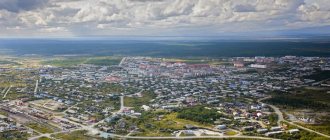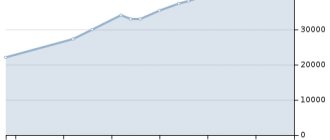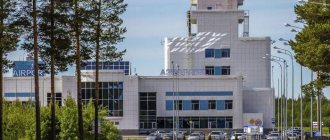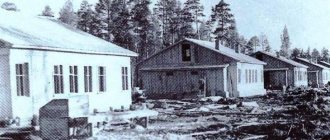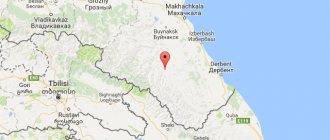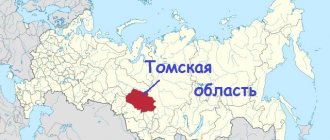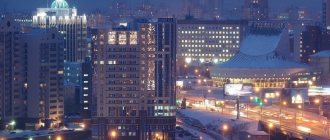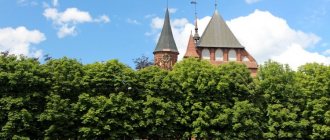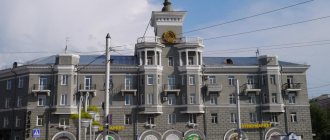The harsh northern region is beautiful and distant. These definitions fully apply to the Yamalo-Nenets Autonomous Okrug. On this land, surrounded by pristine nature, indigenous peoples live according to the customs of their ancestors, and the rich mineral resources are developed using modern technologies. Yamal has always attracted travelers with its unique appearance. Here, the stinginess of the sun and the originality of nature, the severity of the climate and the hospitality of the local residents, the fantastic palette of autumn and the silent whiteness of winter are combined in the most amazing way. Scientists love Yamal for its cultural richness and unique nature. Therefore, be sure to come to the Yamalo-Nenets Autonomous Okrug (capital Salekhard) to enjoy the cleanest air and see more closely the beauty of remote corners of our big country.
What holiday is it today?
January 22, 2022, Saturday
Today are holidays, events: Day of Unification of Ukraine Tomorrow: Premiere of the opera “Eugene Onegin” at the Bolshoi Theater
Today is the Orthodox holiday: Martyr Polyeuctus. St. Philip, Metropolitan of Moscow and All Russia, wonderworker... Tomorrow: St. Gregory, Bishop of Nyssa. Venerable Markian the presbyter. Venerable Dometian, Bishop of Melitino. St. Paul of Komel, wonderworker, student of St. Sergius of Radonezh. Saint Theophan, the Recluse of Vyshensky...
Today is a national holiday: St. Philip's Day... Tomorrow: Gregory - Summer Guide...
Seasons
Seasons, four periods of the year (spring, summer, autumn and winter) characterized by certain average temperatures. The period during which the Sun passes through one of these sectors is called the season. Spring in the Northern Hemisphere and autumn in the Southern Hemisphere begin when the Sun passes through the initial circle of declination and its right ascension is 0° (vernal equinox). Summer in the Northern Hemisphere and winter in the Southern Hemisphere occur when the sun's right ascension is 90° (summer solstice). Autumn in the Northern Hemisphere and spring in the Southern Hemisphere begin when the sun's right ascension is 180° (autumnal equinox). The beginning of winter in the Northern Hemisphere and summer in the Southern Hemisphere is considered to be the winter solstice, when the direct ascension of the Sun is 270°... Next: Seasons. Russian folk calendar. Monthly words...
see also
- Yamalo-Nenets Autonomous Okrug
- Tyumen region
- Cities of Russia
| [ + ] Cities by regions of Russia | |
| Cities of the North-West (NWFD) | St. Petersburg (and its cities) • Leningrad region (historical Staraya Ladoga) • Arkhangelsk region • Vologda region • Kaliningrad region • Karelia • Komi • Murmansk region • Nenets Autonomous Okrug • Pskov region |
| Cities of the Volga region (Volga Federal District) | Bashkortostan • Volgograd region • Kalmykia • Kirov region • Mari El • Mordovia • Nizhny Novgorod region • Orenburg region • Penza region • Perm region • Samara region • Saratov region • Tatarstan • Udmurtia • Ulyanovsk region • Chuvashia |
| Cities of Southern Russia (SFD) | Sevastopol (including Inkerman) • Republic of Crimea • Adygea • Astrakhan region • Krasnodar region • Rostov region |
| Cities of the North Caucasus (NCFD) | Dagestan • Ingushetia • Kabardino-Balkaria • Karachay-Cherkessia • North Ossetia - Alania • Stavropol Territory • Chechen Republic |
| Cities of the Urals (Ural Federal District) | Kurgan region • Sverdlovsk region • Tyumen region • Khanty-Mansi Autonomous Okrug - Yugra • Chelyabinsk region • Yamalo-Nenets Autonomous Okrug |
| Cities of Siberia (Siberian Federal District) | Altai Republic • Altai Territory • Irkutsk Region • Kemerovo Region • Krasnoyarsk Region • Novgorod Region • Novosibirsk Region • Omsk Region • Tomsk Region • Tyva • Khakassia |
| Cities of the Far East (FEFD) | Amur Region • Buryatia • Jewish Autonomous Region • Trans-Baikal Territory • Kamchatka Territory • Magadan Region • Primorsky Territory • Sakha (Yakutia) • Sakhalin Region • Khabarovsk Territory • Chukotka Autonomous Region |
| see also | Cities of the DPR, LPR, Transnistria, South Ossetia • Regions of Russia • Cities of Russia |
Folk calendar about every day
Every day one season always replaces another and this determines a person’s way of life. In connection with this, a folk calendar was formed in which there were practically no nameless, unmarked days. Every day was special, had its own purpose. All this was determined by climate conditions and astrological phenomena.
A calendar is a system for counting periods of time. The first calendars arose a long time ago, in ancient times, because there was a need to measure time. The word calendar comes from the Latin words caleo - to proclaim and calendarium - debt book. This is due to the fact that in Ancient Rome the beginning of each month was especially proclaimed, and because it was customary to pay debts on the first day of the month. Different peoples counted time differently. Some calendars are based on the changing phases of the moon - lunar calendars; in others - the change of seasons - sunny; in others, the length of the year was coordinated with the change of seasons, and the counting of months was associated with the phases of the Moon. Such calendars are called lunisolar.
In Rus', the calendar was called a monthly calendar. Every day, the month book covered the entire year of peasant life, “describing” day by day, month after month, where each day had its own holidays or weekdays, customs and superstitions, traditions and rituals, natural signs and phenomena. The cyclical nature of the calendar is reminiscent of human life, where spring is youth, summer is heyday, autumn is the time of harvesting fruits (it’s good if there are some, otherwise you can live your life without collecting fruits), winter is the time of wisdom and peace. This cyclicality and rhythm determined the way of life of the farmer. The folk calendar was an agricultural calendar, which was reflected in the names of the months, folk signs, rituals and customs. Even the determination of the timing and duration of the seasons is associated with real climatic conditions. Hence the discrepancy between the names of the months in different areas... Next: Folk calendar...
One, two, three, four, five...or areas and real estate of Noyabrsk
The very fabric of this southern outpost of Yamal, like most northern industrial cities, is woven from several central streets, around which compact microdistricts are located like halos. Today, about 100 streets and squares are officially registered in Noyabrsk, and the municipality itself includes about one and a half dozen microdistricts and several villages.
Noyabrsk Map
Moreover, these villages are located both directly on the outskirts of the city (the village of Samostroy) and near it (the village of Zheleznodorozhnikov), and at a significant spatial distance from Noyabrsk - the village of Vyngapurovsky, located 92 km. from the city limits. This local “policy” for zoning cities is absolutely typical for the Yamal-Nenets Autonomous Okrug and is rather of a purely official nature. But, although in fact the residents of November do not consider the Vyngapurovsky district to be a real microdistrict of the city, residents of this village still have to acknowledge this fact by contacting passport offices, the migration service, hospitals and other municipal organizations of Noyabrsk, to which they belong.
But the history of the city began, as mentioned above, with the village of Zheleznodorozhnikov or, as it is called today, the Far NSR. The main “city-forming” link of this remote microdistrict of Noyabrsk was and remains the first railway station of the municipality (today there are two in the city) - Noyabrsk-1, located on the Surgut - Novy Urengoy branch and also serving for receiving, loading and storing small cargo.
However, despite its former significance, today the village of Zheleznodorozhnikov is far from in the best condition: the microdistrict lacks normal street lighting, there are not sidewalks everywhere and public transport is poorly functioning. The local kindergarten "Umka" has no playgrounds, and the only medical institution in the village - an outpatient clinic - is on the verge of closure. The housing stock and the local recreation center "Magistral" are also in a deplorable state. At the end of last year, due to numerous complaints from residents, the current head of the administration of Noyabrsk, Zhanna Aleksandrovna Belotskaya, visited the village, promising to solve the above-mentioned problems of the village in the near future, and also informing residents of the microdistrict about the planned construction of a temple on its territory.
The main residential area of Noyabrsk consists of a number of small microdistricts, which can absolutely conditionally be classified as two large compact territories. This is the conventional central part of the city with a children's park in its heart and eight microdistricts surrounding it, simply called the 1st, 2nd, 3rd... 8th microdistrict,
7 microdistrict Noyabrsk
as well as the microdistricts adjacent to this territory, bearing no less bizarre letter names (D, D-1, I, I-1, I-2, M, N), which appeared as a result of the development and expansion of the city. It is worth noting that the industrial roads and railways of Noyabrsk are located at a distance from these residential areas beyond the right city limits.
The central part of Noyabrsk is the oldest and most populated part of the city, each microdistrict of which has all the necessary residential infrastructure: its own kindergarten, school, a number of shops or a supermarket, pharmacy, hairdressers, entertainment venues, etc. In the heart of the central part of Noyabrsk there is a local green area - the famous children's park with its tree of lovers, which has a mini-stadium,
Children's Park Noyabrsk
attractions, a 5D cinema hall, and surrounded by the park itself there is the City Administration, Gazovikov Square and the Cathedral Mosque. By the way, there is a walk from the Administration building along the Central Alley,
Central Alley of Noyabrsk
then you can see two local attractions at once - the fountain and Memory Square - and go to the luxurious city church of the Archangel Michael, not far from which the Yamal sports complex and the local teleport are also located.
Teleport Noyabrsk
Another halo of cultural life in the central part of the city is its microdistrict Ts-3, located strictly in the center between the 1st, 2nd, 3rd and 4th microdistricts of Noyabrsk. In such a small area of the microdistrict, Geologists Square, a children's clinic, the local Rus cinema, the Pedagogical College, the November SOK and the Zenit sports complex, as well as Noyabrskneftekombank, a post office and a number of shops peacefully coexist. The central part of Noyabrsk is surrounded by a number of garage complexes, and the city’s second railway station, Noyabrsk-2, is located near the 4th microdistrict.
The microdistricts D, D-1, I, I-1, I-2, M and N adjacent to the central zone also have a very developed residential infrastructure and are compact areas with their own school, kindergarten, pharmacy and a network of shops and departments of various services . In addition, in these microdistricts there is a local Ice Palace, a ski resort, the Neftyanik recreation center, the Atlantis sports complex, a monument to the Chernobyl victims, the Noyabrsk police department, the fire department of the Ministry of Emergency Situations,
Fire station Noyabrsk
Tax Inspectorate and. There are also a number of hotel complexes, shopping centers and shops, restaurants and cafes, etc. The southern end of this zone of Noyabrsk is crowned by the central Hospital Complex, past which the route to the airport passes, and garage buildings, and from the northern part there is a road to one of the main local natural attractions - Lake Hanto, after which they even once wanted to name the city.
Shore of Lake Khanto Noyabrsk
The residential areas themselves in the municipality are represented mainly by modern 5-9-story buildings, but in some areas of the city there are also one-story individual and two-story apartment buildings.
Housing prices in Noyabrsk start at a lower limit of 45-60 thousand rubles per square meter, but can reach very large sizes, especially when it comes to housing with an improved layout or luxury real estate. So a simple one-room apartment in the city with a total area of 43 square meters. meters in a capital building can cost approximately 2.2-2.5 million rubles, while the cost of luxury penthouses starts at 12.5 million rubles (with a living area of 86 square meters).
The cost of housing is significantly lower in local “wood buildings”, where a one-room apartment can be bought for 1-1.2 million rubles and even cheaper. However, given the growth in the well-being of city residents, recently the vast majority of citizens have purchased only permanent housing.
Residential area of Noyabrsk
Fishing calendar for every day
The fishing calendar should not be taken as an absolutely indisputable truth. Fish biting is greatly influenced by a whole range of natural factors, as well as the influence on the nature of man himself. You must not forget that the fish’s bite depends and is determined not only by the calendar dates and biological cycles of their life, reflected in the calendar, but also, no less, by the state of their habitat; the bite also depends on weather conditions: air and water temperatures, cloudiness, wind direction and strength, etc... Next: Fishing calendar...
Noyabrsk and its November residents - demographic features of the city
It is not for nothing that the administration of the southern outpost of Yamal is so concerned about the favorable environmental situation in Noyabrsk, because it plays an important role in the life expectancy and increase in the city’s population, and healthy November residents are the key to a bright future for the municipality.
By the way, the history of this municipality began with only 40 people who were the first to land on the territory of the Kholmogory oil field in 1975, but by the time it was awarded city status in 1982, the population of Noyabrsk had reached 30.6 thousand people. The subsequent rapid development of the municipality's oil industry in the 80s of the last century led to an intense influx of migrants to Noyabrsk, which at that time was in dire need of a large number of labor resources, which in turn led to an almost threefold increase in the population. And already in 1989 the number of November residents reached 85.9 thousand people. The further influx of migrants into the city was cyclical. At first, it was replaced by a sharp outflow of population in the early 1990s due to the collapse of the USSR, and later it increased and decreased, mirroring the economic situation in the country and prices for raw materials on the world oil and gas market. After 2000, the population growth of Noyabrsk was already determined mainly by natural growth, and by 2002, 96.4 thousand people lived in the municipality, and 2014 statistics recorded a mark of 107,447 residents (this is 20% of all residents of the Yamal-Nenets Autonomous Okrug).
At the moment, the annual population growth in Noyabrsk fluctuates around 500 people, and the average age of city residents is just over 31 years. At the same time, a characteristic feature of the population of Noyabrsk, like most cities of the Yamal-Nenets Autonomous Okrug, is a record share of people of working age from the total number of city residents - more than 70%, while the share of children is about 21%, and people of retirement age - approximately 9%, according to for 2012. This obvious “youth of the population” of Noyabrsk is a direct consequence of the outflow of its residents after finishing their working careers to the central and southern regions of Russia with more favorable climatic and natural conditions.
But the national face of the residents of Noyabrsk is particularly diverse. And, despite the fact that the lion's share of November residents comes from four main nationalities - Russians (59%), Ukrainians (13%), Tatars (5.5%) and Nenets (5.2%) - Noyabrsk is also home to a large number Belarusians, Khanty, Azerbaijanis, Bashkirs, Chechens, Dagestanis, etc. Considering the peculiarities of the city’s national palette, it is easy to guess that two main religions predominate in Noyabrsk - Orthodoxy among the Slavic peoples and Islam among the Tatars, Bashkirs and people from the southern republics.
Well, if we ignore the tedious numbers and dry facts, then we can easily notice that, despite the predominance of harsh professions and such a diverse population, the majority of the city’s residents are cultured and hospitable November residents, extremely scrupulous about maintaining cleanliness in their city and caring for his well-being.
Orthodox calendar about every day
Orthodox calendar: Orthodox, Church and Christian holidays.
The church year is an alternation of weekdays and holidays. On weekdays, a person is called to work “by the sweat of his brow to earn his bread.” Holidays are given in order to feel liberation, to rise above the bustle and routine of the world, to feel involved in the highest of worlds, “where there are no illnesses, sorrows and sighs, but endless life.” Since ancient times, holiday cycles have been associated with the seasons. The pagans associated them with the worship of the forces of nature, the cult of which in the Old Testament was replaced by gratitude to the Creator for the universe. And although the connection between holidays and the seasons has not completely lost its power, since God is present in everything, in the plant and animal world, in human works, it nevertheless faded into the background, giving way to a spiritual foundation built on the Sacred Scriptures. The history of Orthodox holidays dates back to the times of the Old Testament. Each of the Orthodox holidays is dedicated to the remembrance of the most important events in the life of Jesus Christ and the Mother of God, as well as the memory of saints... Next: Orthodox calendar...
Russian folk calendar for every day
The word “sign” comes from the word “notice”, i.e. observe. As a result of observing what happens around a person every day, he accumulates life experience. This knowledge was passed down from generation to generation, carefully preserved and people trusted it as a sacred book. Many signs have come to us from the depths of centuries without losing their knowledge. Each of us is free to choose: to dismiss all this as an absurd superstition or to take a closer look at the signs and take the centuries-old experience of generations more seriously. Most of us, when taking exams, ask them to scold them, boasting about some kind of good fortune or luck, spit so as not to jinx them or knock on wood, take a detour if a black cat crossed the road, are afraid of the number 13 and much more. And who among us does not have lucky things, numbers? Who has never resorted to the help of fate at least once in their life, who has not believed in secrets? It’s as if everything connected with signs is hidden somewhere deep in our subconscious. Often we remember them mechanically, unconsciously, or just as a joke. But, undoubtedly, the signs contain a lot of accurate knowledge and practical wisdom of our ancestors. They cover all the characteristic, often difficult to perceive, natural phenomena. Signs have preserved a lot of what was in old folk holidays and customs; they help predict the weather, grow crops... Next: Folk signs...
General information about the Yamalo-Nenets Autonomous Okrug
Distinctive features .
The words of Marina Khlebnikova’s song are well suited to the Yamalo-Nenets Okrug: The cold weather warms you up and beckons you with the warmth of home
You buy me a palace, and I'll go back again
And the white, white snow will make me feel good
Indeed, despite the long winter, snow and frost, there is a lot of pleasant things in the life of the residents of the Yamal-Nenets Autonomous Okrug. This is northern romance, high salaries, good social protection, low levels of environmental pollution, and a relatively low level of crime. It is not for nothing that in 2013 Novy Urengoy became second, and Noyabrsk became 13th in our ranking of Russian cities most suitable for living.
Stella "Arctic Circle" in Salekhard. Photo by tanihiola (https://fotki.yandex.ru/users/tanihiola/)
Serious development of the lands of the Yamalo-Nenets Autonomous Okrug began in the late 60s of the last century. In a matter of years, modern cities with developed infrastructure grew here, where stern but romantic people lived. Thanks to gas production in the north and oil production in the south of the district, as well as highways transporting gas and oil, it has become one of the most economically developed regions of Russia.
In addition to workers on gas and oil rigs, scientists also come here. The indigenous population - the Nenets (Samoyeds) - are a very interesting people, with their own culture, customs, and beliefs. Historical and local history museums operate in the cities, documentaries are made about the peoples of the North, and their spiritual leaders-shamans, bearers of the wisdom of past generations of these peoples. Despite the nearby cities with the benefits of 21st century civilization, many tribes continue to live like their ancestors a hundred or two hundred years ago: they lead a nomadic lifestyle, hunting, fishing and breeding deer.
Raw reindeer meat is a common food for the Nenets
Geographical location . The Yamalo-Nenets Autonomous Okrug is located in the north of the West Siberian Plain and is part of the Ural Federal District. The northern coast of the district is washed by the waters of the Kara Sea. On the map of the Yamal-Nenets Autonomous Okrug, the Yamal Peninsula especially stands out, the entire eastern coast of which is washed by one of the largest bays of the Arctic - the Gulf of Ob, with a length of about 800 km.
Ob Bay
The neighbors of the district are: in the east - the Krasnoyarsk Territory, in the south - the Khanty-Mansiysk Autonomous Okrug, in the west - the Komi Republic and the Nenets Autonomous Okrug of the Arkhangelsk Region. Most of the Yamal-Nenets Autonomous Okrug is located beyond the Arctic Circle. The entire territory of the district belongs to the regions of the Far North.
The largest river in the Yamal-Nenets Autonomous Okrug is the Ob. Other large rivers are Nadym and Taz. The landscape of the district is quite diverse. In the west these are the eastern slopes of the Ural ridge, in the north there is tundra, turning into forest-tundra as you move to the south.
The population of the Yamalo-Nenets District is 541.6 thousand people. 70% of them are people of working age. The region is characterized by very high fertility and low mortality. Natural population growth +11.4 people. per 1000 inhabitants.
Nadym: “And it’s better on deer!” Photo by dim.kapishev (https://fotki.yandex.ru/users/dim-kapishev/)
Russians make up 60% of the district's population. In second place are Ukrainians (9.37%), in third are Nenets (5.89%). The population is constantly growing due to migrants who come here in search of well-paid work. Meanwhile, others, who have already earned enough money, leave the Yamal-Nenets Autonomous Okrug, moving to the south - to Tyumen or Moscow / St. Petersburg. It is not for nothing that Yamal is called the Russian Klondike - people come here in search of good luck, and those who are lucky return back in triumph.
Crime . The Yamalo-Nenets Autonomous Okrug is in 28th place in the ranking of regions in terms of crime levels. Of course, big money also attracts criminals of all stripes, especially organized crime groups. No wonder they decided to make Novy Urengoy a closed city. Among other problems, it is worth noting drug trafficking. It is especially developed here, and the level of drug addiction in northern cities is very high.
The unemployment rate in the Yamalo-Nenets Autonomous Okrug is one of the lowest - 0.58%. And the average salary is one of the highest (RUB 63,132). But even here, the distribution of salaries across industries is uneven. There are also those where this value is below 20 thousand rubles per month. And the highest salaries in the Yamal-Nenets Autonomous Okrug are in the field of extraction of fuel and energy minerals (who would doubt it!) - 93 thousand rubles. and in the production of petroleum products - 92 thousand rubles. per month.
The cost of real estate in the Yamal-Nenets Autonomous Okrug is one of the highest in Russia. At least in Novy Urengoy it is 103 thousand rubles per sq. m. meter. To buy the simplest one-room apartment here, you need to shell out at least 4 million rubles. In the suburbs of the city, prices are much lower - about 1.8 million rubles. Two-room apartments in the city are much more expensive: 5.6 - 9 million rubles, three-room apartments 7 - 12 million rubles.
The climate of the Yamalo-Nenets Autonomous Okrug is harsh, sharply continental. Cold Arctic air masses from the north easily come here, but humid air masses from the Atlantic and Pacific Oceans practically do not reach here. The average January temperature is −20°C, but frosts reach −30°C and even −50°C. Summer here is short - 50 days, but temperatures can reach +30°C. The amount of precipitation in summer is 140...150 mm. Thanks to the dry climate, frosts are tolerated much more easily here, which cannot be said about the heat.
Holiday calendar, dates and events of the year
All state and professional holidays in Russia, including significant World and International holidays, and other equally interesting holidays and events about every day.
The holiday has always kept pace with the history of mankind. Social time can be divided into three types: everyday life (weekdays), weekends and holidays. Everyday life is a series of practices repeated day after day and every day (work). Weekends are regular breaks from the rush of everyday life. It is believed that on weekends a person should restore his strength after working days. Day off, non-working day. A holiday is a day of celebration established in honor or in memory of someone or something. A day or series of days celebrated by the church in memory of a religious event or saint... Next: Calendar...
Prayer book, Orthodox prayers for every day
Prayer is the most powerful means for healing all illnesses - both physical and mental. Prayers can be laudatory or grateful, petitionary and repentant. If we have offended God, sinned, we must ask Him for forgiveness, that is, repent. Such prayers are called repentant prayers. If everything is fine with us, if we and our loved ones are healthy and prosperous, if we have a place to live, something to wear, something to eat, we must glorify and thank God for this. Such prayers are called praise or thanksgiving. If some misfortune, illness, trouble or need happens, you need to ask God for help. Such prayers are called petitionary... Next: Orthodox prayers...
Zodiac, astrological, eastern calendar. Zodiac signs
In ancient times, to establish the calendar, priests used knowledge of the positions of all the planets. Before the reform of Peter 1, the New Year was celebrated on the Day of the Autumn Equinox. On this day, according to ancient legend, the most peaceful treaty was concluded between the Great Race (ancient Slavs) and the Great Dragon (ancient Chinese) and it was approximately 7518 years ago... For the ancient Slavs, the calendar month corresponded to the lunar cycle from new moon to new moon, taking into account such Thus, the relationship of the entire annual cycle with astronomical and natural phenomena. There was no coherent calendar system. The main natural phenomena are still considered to this day to be the days of the solar equinox and solstice - the Slavic holidays Maslenitsa, Kupala, Ovsen and Kolyada. But during the time of Peter 1, all ancient Slavic calendars were abolished and a new Western European calendar from the Nativity of Christ (Julian calendar) was introduced, while the beginning of the calendar was moved to January 1. The Julian calendar (old style) did not take leap days into account and accumulated one extra day every 128 years. After the October Revolution in 1918, the Gregorian calendar (new style) was introduced in Russia, according to which an amendment of 13 days was introduced. The calendar of the ancient Slavs was based on two planets: the Sun and the Moon. And now they don’t use anything at all. The calendar has become static. There is no such thing as the calendar, it turns out, resting on some planet. Nobody even knows about it. There are just some standard numbers, there are months and holidays. The calendar is based on the Sun and Moon. Why is this so? Because these two luminaries influence the Earth. The Earth revolves around the Sun, and the Moon revolves around the Earth. And these two luminaries create the atmosphere on the planet. From here the calendar is built... Next: Astrological calendar...
“Made with us” and on Yandex.Zen
The city of Salekhard (until 1933 - Obdorsk) is the capital of the world's largest gas producing region - the Yamalo-Nenets Autonomous Okrug. The only city on the planet located at the latitude of the Arctic Circle.
The history of Obdorsk-Salekhard goes back to the history of the development of the north of Western Siberia, the creation of statehood among the indigenous population, and the industrial development of the Arctic. Obdorsk was for centuries an outpost of the Russian state on its northern route to the Pacific Ocean.
After the annexation of Siberia to Russia, on the site of the Ostyak town, near the confluence of the Poluy and Ob rivers, the Russian Cossacks of the Berezovsky governor Nikita Trakhaniotov founded the Obdorsky fort in 1595. Obdorsk (in the Khanty language - Ob town) has experienced many transformations, always remaining the center of the region and an independent administrative unit. It contained the headquarters of Ostyak and Samoyed elders, representatives of the tsarist administration. Ostrog was renamed Obdorskaya Zastava in 1635. In 1799 the fortress was abolished. The outpost was transformed into the center of the Obdorsk volost of the Berezovsky district of the Tobolsk province - the village of Obdorsk.
In 1897, in Obdorsk there were 30 houses, 150 trading shops, and there were 500 permanent residents who were mainly engaged in hunting, fishing and trading.
Every year from December 15 to January 25, the famous Obdorsk Fair was held, the turnover of which exceeded 100 thousand rubles. Thousands of sellers and buyers came to it. Merchants brought here flour and bread, metal products and jewelry, cloth, wine and tobacco, and took away furs, walrus tusks, fish and bird feathers. After the formation of the Yamalo-Nenets National District in 1930, Obdorsk became its capital and in 1933 received a new name - Salekhard (from the Nenets "Sale-Kharn" - a city on a cape). In 1938, the district center acquired the status of a city.
Now it is a modern administrative, cultural and business center of the region. The city is provided with modern means of communication and telecommunications.
Recently, Salekhard has turned into a large worthwhile site. The housing shortage was one of the city's acute social problems. Therefore, the construction of residential buildings and social facilities became a priority. In the early 90s, there were only two dozen permanent houses in Salekhard; in 15 years the city was rebuilt almost from scratch.
Government of Yamal
Romantics of the 70s.
Arctic Circle Stele
Road bridge
Salekhard Airport Obdorsky fort
City administration
Yamal-Nedra
Chubynina Street
Old County Government
Eternal flame
Dream books online, interpretation of dreams
A dream book is nothing more than an interpreter of dreams and dreams, a translator of dreams. Since ancient times, people have been using dream books; dreams have always been given great importance, and people have often noticed the prophetic properties of some dreams. The dream book can become your faithful assistant every day and throughout your life, thanks to the dream interpreter you can always make the right decisions, the dream book will help you resist temptations in time, and will warn you against wrong steps and frivolous actions. Further…
